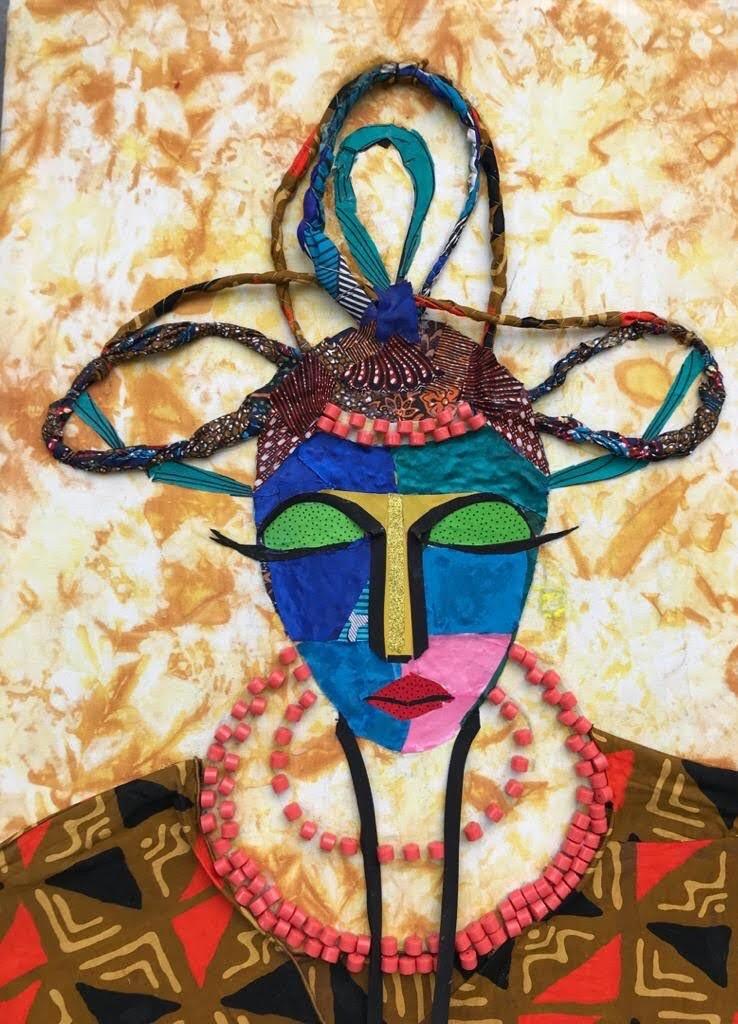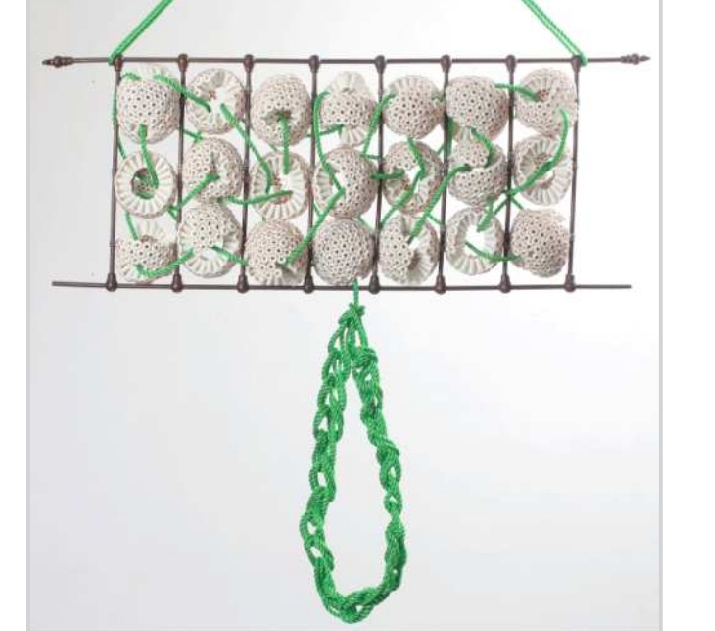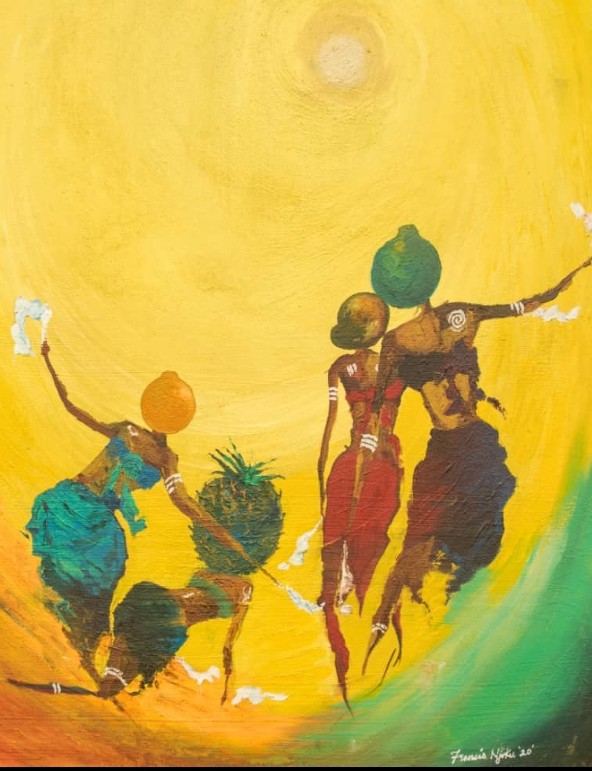Nwanyioma

This artwork is titled Nwanyioma. It illustrates an abstract image of a beautiful woman dressed in a cultural igbo attire of Nigeria. The word Nwanyioma is gotten from an Igbo dialect which means good woman.
The choice of fabric used to cloth this artwork is designed with traditional motifs called Uli which typically defines the image as an Igbo woman. Her hairdo, twisted in blue and brown colors defines the strength of a woman. Her lips create attraction while her closed eyes signify every woman’s dreams which she works hard to bring into reality. Beads are associated with royalty. Her beads show elegance, pride and dignity which she portrays in her character and composure.
In a nutshell, this artwork defines what we Africans see as a true feminine beauty (it’s beyond physical attributes). Nwanyioma educates us to be good in words and actions. It encourages us to emulate good virtues and reminds us of who we truly are as African women. We are beautiful, virtuous, brave and productive. We are stronger than we can ever imagine. We are Africans, we reign like royals.
About The Artist
Ogueme Chinenye Lilian was born on August 25, 1995. She hails from Uzubi Obodukwu community in Ideato Local Government Area of Imo State, Nigeria. She holds a Bachelor Degree in Textile Arts from Imo State University (IMSU). Exhibited at Imo Art and Fashion Week 2019, and the VillaFest Art and Film Festival 2020. She sees textiles beyond human body adornment and decorative purposes, not only for clothing but as a creative medium to explore ideas. Seeing through her artworks, I explore various textile techniques, fabrics and fashion accessories as a medium to express my feelings used in recreating social impacts and upholding good societal values thereby creating positive impact in our society. Our cultural heritage is my inspiration; therefore, I try to finish every work to breathe life into a long forgotten Africa cultural symbol, proverb and lifestyle. Art is my voice, my artworks speaks not only for me, but for the weak and history that were long forgotten.




